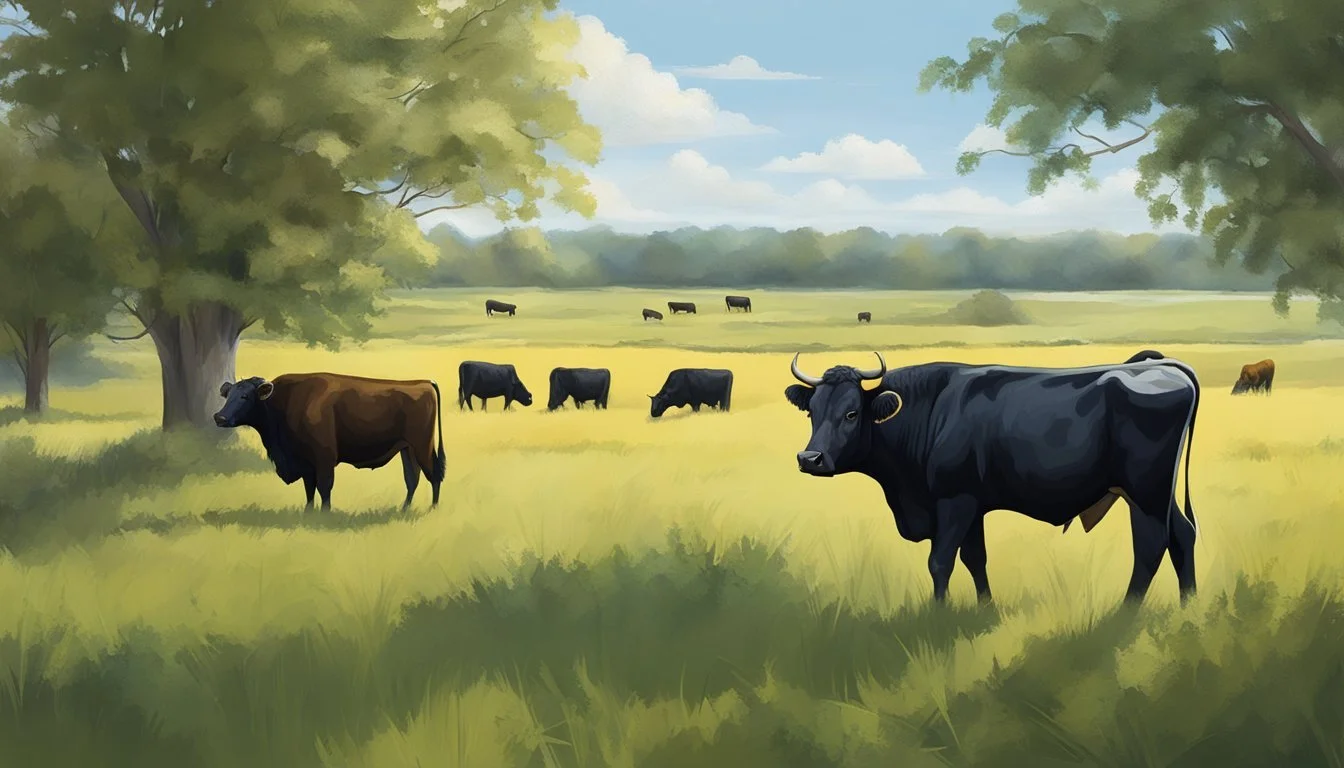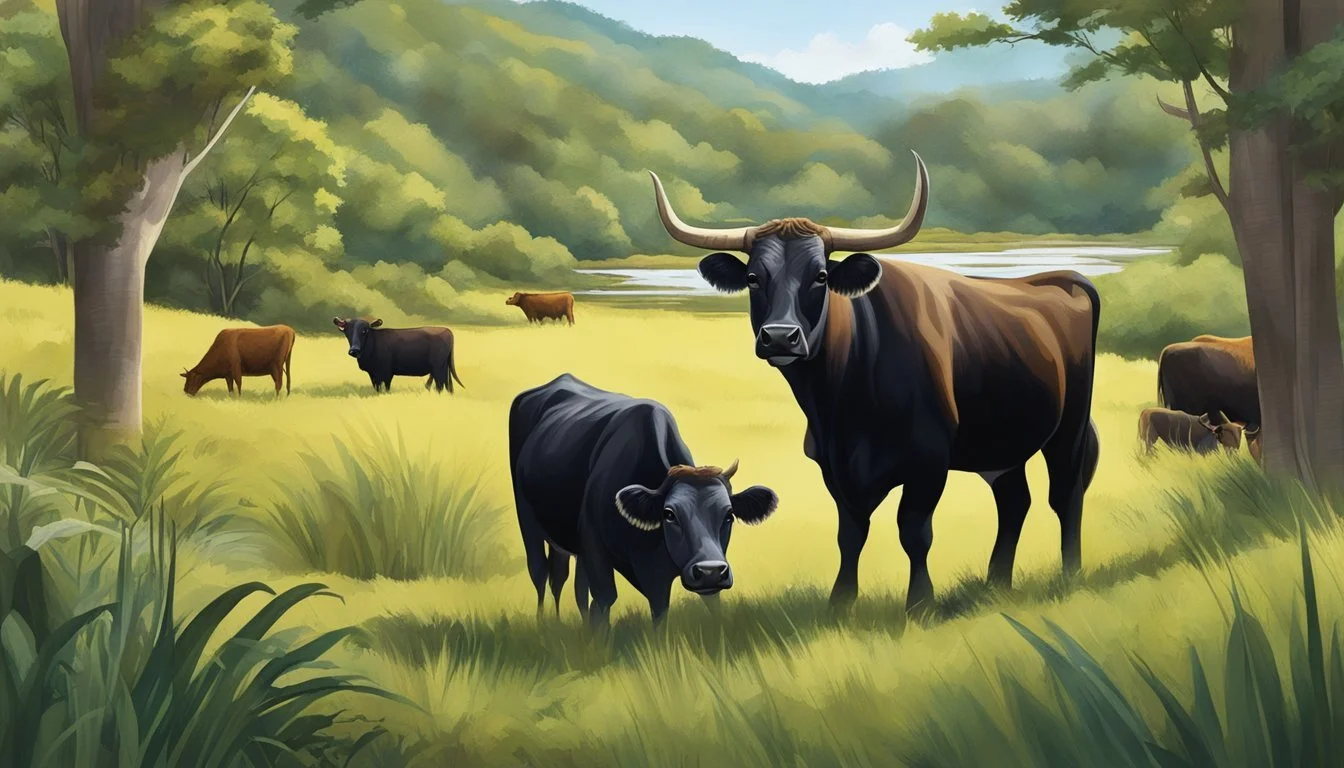Dexter Cattle and Wildlife Conservation
Strategies for Harmonious Habitat Management
Dexter cattle, the smallest breed of cattle in Europe, have found a unique place in the realm of wildlife conservation and sustainable farming practices. With their origins tracing back to the rugged terrain of the Irish mountains, these compact and robust animals excel in environments where other cattle might struggle. As the world increasingly seeks methods to harmonize agricultural productivity with ecological preservation, Dexter cattle are gaining attention for their ability to contribute to conservation and rewilding projects. Their hardy nature and adaptability make them particularly well-suited for managing and improving habitat quality without causing excessive damage to the delicate ecosystems they inhabit.
The trend towards utilizing Dexter cattle for conservation grazing highlights a shift in how natural landscapes are managed. Conservation grazing, a practice where livestock are used to maintain and restore biodiversity, has seen tangible successes across various sensitive habitats. Dexter cattle, with their smaller size and voracious appetite for vegetation that other breeds typically avoid, such as bramble, play a significant role in these efforts. Their grazing helps in controlling invasive plant species, promoting the growth of native flora, and maintaining open landscapes, which benefits a wide range of wildlife species.
As the agricultural community and environmental organizations collaborate to tackle climate change and biodiversity loss, Dexter cattle are increasingly recognized not only for their agricultural value but also for their environmental benefits. Farmers and conservationists alike are finding that these cattle can thrive within a low-input farming system that supports wildlife habitats and contributes to the overarching goals of land conservation. With a growing presence in networks promoting nature-friendly farming practices, Dexter cattle are establishing a clear place in strategies aimed at creating sustainable food systems that also protect and enhance the natural world.
The Dexter Breed: Origin and Characteristics
The Dexter breed boasts a rich history and a set of distinctive characteristics that have cemented its place in both agricultural and wildlife conservation circles. Natural to Ireland and known for its small stature, the Dexter is a versatile breed with a docile temperament, making it well-suited for a variety of environments.
History and Origin of Dexter Cattle
Dexter cattle originated in the southwestern part of Ireland, more precisely in County Kerry. The breed was named after Mr. Dexter, an agent of Lord Hawarden, who played a role in the breed's development during the 18th century. The Kerry and Dexter Herd Book, later becoming the Dexter Cattle Society, officially recognized the breed in the late 1800s.
Physical Characteristics of Dexter Cattle
Characterized by their small size and short legs, Dexter cattle are considered a small breed. Adult Dexter cattle typically weigh between:
Cows: 600-700 pounds
Bulls: 1,000 pounds Despite their diminutive stature, they display robust and muscular builds, adapted to various environments.
Dexter Cattle Temperament
Dexters are noted for their docile temperament. They are calm by nature and manageable, which makes them an ideal choice for those new to cattle ownership. Their disposition also facilitates integration into farm settings and conservation areas without being disruptive.
Health and Fertility in Dexter Cattle
This breed is hardy with few calving difficulties and a good fertility rate. However, they can be carriers of genetic disorders such as chondrodysplasia, a form of dwarfism, and PHA (pulmonary hypoplasia with anasarca), though responsible breeding practices are minimizing these issues.
Distinct Features of Dexter Breed
Dexters are known for their dwarfism and versatility in small scale farming. Their ability to effectively graze and convert feed makes them sustainable options for conservation efforts. Certain lines of Dexter cattle are naturally polled (without horns), while others may be horned.
Dexter Cattle Color Variations
Dexter cattle can exhibit three main color variations: black, red, and dun. Each color appears in a solid pattern, and the breed's coat is known for its durability and adaptability to different weather conditions.
Black Dexters are predominant, often showcasing a rich, deep color.
Red Dexters carry a recessive gene that results in a reddish coat.
Dun Dexters have a wheat-colored or tan coat, offering a distinctive look within the breed.
Dexter Cattle Uses and Management
Dexter cattle are a versatile small breed known for their dual-purpose capabilities and hardiness, making them suitable for both farming and conservation efforts. Here we explore their roles and how they're managed within these spheres.
The Dual-Purpose Nature of Dexter Cattle
Dexter cattle are considered a dual-purpose breed, offering both high-quality beef and rich, creamy milk. Their milk typically has a higher butterfat content, around 4%-5%, ideal for cheesemaking and butter production. Despite their small stature, Dexters are efficient beef producers, known to provide well-marbled and flavorful meat.
Breeding of Dexter Cattle
Breeding Dexter cattle takes into account their dual-purpose utility and hardiness. Selection of bulls and cows for the herd aims to maintain their small size while ensuring good health and productivity. Polled (naturally hornless) breeds have gained popularity as they are easier to manage and reduce the risk of injuries within the herd.
Dexter Cattle in Farm Management
Dexters are well-suited for small landholders due to their size. They require less space and consume less feed than larger breeds, yet they effectively convert forage into milk and meat. Their role in farm management touches on aspects of sustainability, where their presence supports a move away from synthetic fertilizers and promotes organic farming.
Conservation Grazing with Dexter Cattle
Conservation grazing is a practice where Dexter cattle are used to manage and improve biodiversity in natural habitats. They are particularly good at grazing on rough vegetation without damaging sensitive soils, thus helping to maintain various ecosystems and support wildlife conservation.
Sustainable Practices with Dexter Cattle
The use of Dexters supports sustainable and organic farming practices. They adapt well to various climates and can thrive on pasture, requiring minimal supplemental feeding. This reduces the farm's reliance on synthetic fertilizers and feeds, leading to improved soil health and overall farm productivity.
What Smallholders Need to Know
Smallholders looking to raise Dexter cattle should know about their adaptability and ease of management. Their hardiness translates into lower veterinary costs and their ability to manage with less intensive care. For individuals concerned with climate impact and sustainable practices, Dexter cattle are an appropriate choice for a small-scale, eco-friendly approach to agriculture.
Conservation and Biodiversity
The inclusion of Dexter cattle in conservation efforts showcases a practical approach to enhancing biodiversity on farmlands while engaging in wildlife conservation.
Dexter Cattle's Role in Wildlife Conservation
Dexter cattle, recognized for their small stature, play a vital role in wildlife conservation. By grazing on rough vegetation, they maintain open habitats that are beneficial for various wildlife species. These open areas are crucial for foraging invertebrates and create a more diverse ecological niche that supports a range of species.
Biodiversity Promotion on the Farm
On the farm, diversity in land management practices, including the integration of native breeds like Dexter cattle, has shown to promote biodiversity. Mitigated by an ecologist's guidance, these cattle help preserve a balance of trees and shrubs on the land, which sustains different levels of the food chain, creating a thriving ecosystem.
Dexter Cattle in Rewilding Projects
Dexter cattle are an asset to rewilding projects due to their adaptability and hardiness. These projects often aim to restore land to its natural, unmanaged state, and the presence of Dexter cattle aids in managing overgrown areas, thus contributing to habitat restoration and conservation of endangered species.
Conservation Status of Dexter Cattle
As a rare breed, Dexter cattle were once endangered themselves. Their conservation status has improved, partly due to their utility in sustainable land management and agriculture which has increased their popularity among farmers and conservationists.
The Impact of Dexter Cattle on Soil and Vegetation
The Dexter cattle's grazing patterns contribute to soil health, as they help aerate the soil with their hooves and recycle nutrients through their manure. Such activity fosters the growth of a multitude of plant species and supports robust soil ecosystems, which are fundamental for sustainable farmland and conservation efforts.
Dexter Cattle Societies and Associations
Dexter cattle societies and associations play a crucial role in preserving the breed, maintaining registries, promoting heritage, and supporting conservation efforts. These organizations provide resources and guidance for both breeders and enthusiasts.
American Dexter Cattle Association
The American Dexter Cattle Association (ADCA), established in 1957, evolved from the American Kerry and Dexter Club to specifically preserve and maintain records for Dexter cattle. It supports breeders in the United States, offering services such as registration and information about breeding practices. Members can access resources to help promote Dexters as a sustainable option for conservation grazing.
The Dexter Cattle Society in Europe
Across the Atlantic, the Dexter Cattle Society represents the interests of the breed in Europe, notably in England where it was established in 1924 from the Kerry and Dexter Cattle Society. The organization focuses on promoting the Dexter breed, supporting owners and breeders, and keeping the heritage of Dexters alive in the European context.
Breeding Programs and Registry
Both American and European societies manage breeding programs and oversee the registry of Dexter cattle to ensure the genetic purity and track the lineage of each animal. The Kerry and Dexter Herd Book plays a pivotal role in this, documenting thousands of bulls and cows and supporting the conservation of this heritage breed with correct breeding practices.
Promotion of Dexter Cattle Heritage Breeds
Organizations like the ADCA and the Dexter Cattle Society not only protect the genetic integrity of Dexters but also promote the breed as a versatile, small-sized cow suitable for various sustainable farming practices. They highlight the breed's attributes, such as being efficient grazers and having a gentle temperament, which make them ideal for wildlife conservation efforts.





